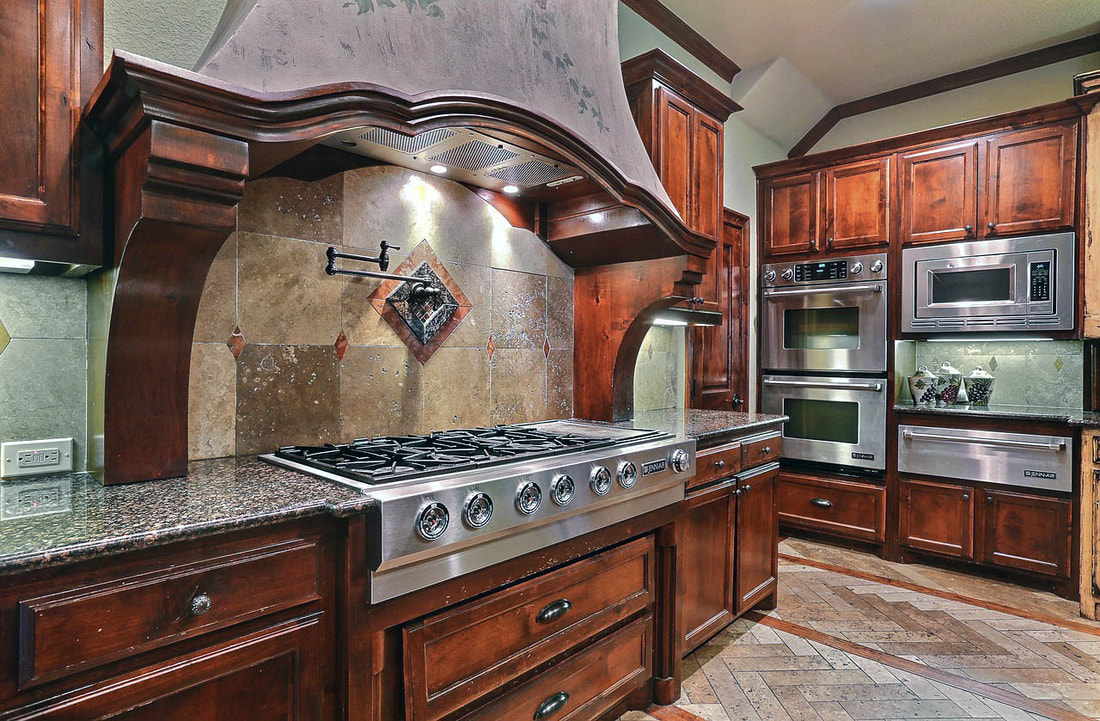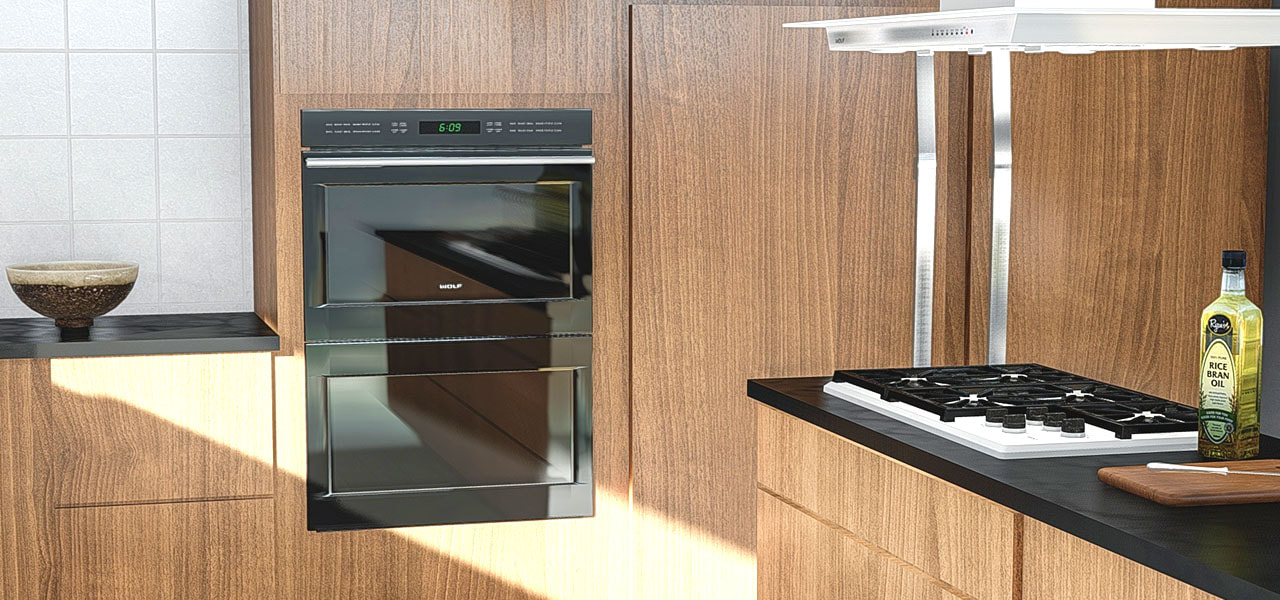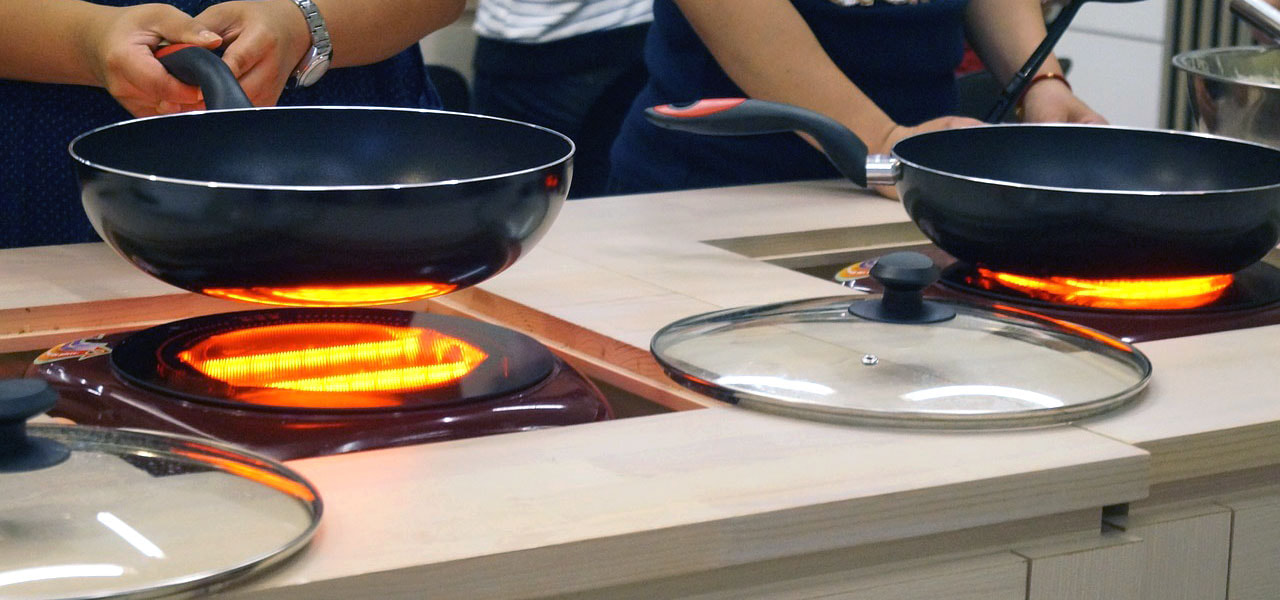|
By Anna Hazard
Introduction
Besides refrigeration, one of the main functions of the kitchen revolves around the use of standard ovens, ranges, stovetops, and cooktops when it comes to cooking. As this area is also one of the main locations for kitchen accidents (in particular burns and fires), particular attention should be paid to it and various safety options available when it comes to accessibility and aging-in-place.
Since the most optimal choices regarding universal design for ovens & cooktops are not ones that are commonly installed in standard kitchens, this is a prime area for remodeling when the time comes to make adjustments for an older or more health handicapped user. Ovens
In general when it comes to accessibility and aging in place, side-swing/side opening wall ovens are recommended for easier access as opposed to the more common stovetop with under-oven option. The side door makes access to the interior of the oven easier without having to lean over a potentially heated door frame and without requiring that any dishes inside be lifted over the bulk of the door.
Wall ovens can be mounted in the most convenient location within the kitchen at a height that is accessible for everyone (keeping in mind that some people may be using the oven while standing while some may be seated in wheelchairs instead). Wall ovens can also be vertically aligned with adjacent countertops thus reducing the need to bend or lift heated dishes. This is particularly helpful when the interior rack is aligned with the counter in order to require the least amount of maneuvering when it comes to handling the contents inside. Other options to keep in mind when it comes to purchasing an oven style for a senior include the presence of a large, bright console that is easy to read with readily accessible buttons and controls that can be manipulated comfortably even by those who may have arthritis or other hand strength or dexterity issues. The lighting inside should optimally also be easy to maintain & replace whenever the bulbs burn out, not requiring unscrewing hard to reach panels. Certain styles of ovens such as the Discovery Wall Oven by Dacor include extra features such as adjustable contrast and font sizes for its text read-outs which can be greatly helpful for those with diminishing eyesight. In addition, the oven should have plenty of interior lighting to make its contents readily viewable. Installing a pull out counter beneath the oven is another beneficial option. This set-up would allow a place to immediately rest any heated dishes directly coming out of the oven without having to carry them to an adjacent countertop instead. Otherwise, an empty space or cabinet directly underneath the oven area would allow easier access to the location for those in wheelchairs. Ranges, Cooktops, & Stovetops
Of the various range, cooktop, and stovetop designs available, electric cooktops are generally recommended for accessibility and aging in place. This is due their ability to be installed at a variety of heights for the most comfortable use by the household inhabitants as cooktops sit separately on top of a countertop without an attached oven below (and are thus a good option for kitchens with wall ovens).
In addition, electric or inductive cooktops with level burners on a smooth top create the easiest & safest transition of food, pots, & pans between the various burners to the nearby countertop. Cooktops also tend to cool down much faster than standard ranges and thus present far less of a burn or fire safety risk. A cooktop with controls on the side or front also has easier access than a normal stove with controls at the back. In particular, systems that use induction cooking can be an optimal option as they transfer heat directly to the pot or pan through conduction and thus the surface never becomes as hot as other range or stovetop styles. In addition, turning on a induction burner without placing an attendant pot atop it will not heat the surface at all, thus reducing the chance of accidental burns or fires. Otherwise, options & strategies that should be kept in mind when it comes to safety & accessibility include making certain that all burners are installed in a location where no outside objects (such as dangling curtains) can come into touch with them and that this area around the range or cooktop remains clear of clutter. For safety reasons the burners should also have a downdraft feature to pull heat away from the user as well as having brightly colored indicators for when they are on or if their surface still remains hot (even if the rest of the cooktop or range is off). The display on the range, cooktop, or stovetop should have large numbers, text, and graphics that are easily discernable and well lit with front mounted controls that will not require the user to reach over hot burners to access them. The burners should also be self-cleaning for easy maintenance. Other helpful features include sensors for detecting when pots & pans are about to boil over or when their contents start burning. For better accessibility for those with a wide variety of health conditions, it would also be best to have a cooktop installed over an open area or cabinet doors that will allow easier access for those in wheelchairs or other potential users who may need to be seated while cooking or otherwise manipulating the burners for an extended period. View the Rest of the Series
Part 1 - Introduction
Part 2 - Exterior Part 3 - Landscaping & Gardens Part 4 - Patio, Porch, & Deck Part 5 - Garage & Carports Part 6 - Entrances, Exits, & Thresholds Part 7 - Exterior Steps & Ramps Part 8 - Threshold Lighting & Windows Part 9 - Interior Doors & Halls Part 10 - Interior Steps & Staircases Part 11 - Interior Stairlifts Part 12 - Interior Elevators Part 13 - Interior Lighting Part 14 - General Interior Flooring Part 15 - Interior Flooring Comparisons Part 16 - HVAC & Energy Efficiency Part 17 - Power, Communications, & Other Interior Systems Part 18 - Living Room Part 19 - Kitchen Layout, HVAC, & Electrical Systems Part 20 - Kitchen Lighting, Flooring, and Sink Faucets Part 21 - Kitchen Countertops & Cabinets Part 22 - Kitchen Refrigerators, Freezers, and Dishwashers Part 23 - Kitchen Ovens, Ranges, Stovetops, and Cooktops Part 24 - Kitchen Microwaves, Blenders, & Food Processors Part 25 - Miscellaneous Kitchen Items Part 26 - Dining Room Layout, Tables, & Other Furniture Part 27 - Dining Room Flooring, Lighting, & Meal Serving Equipment Part 28 - Bedroom Layout & Closets Part 29 - Accessible Beds Part 30 - Bedroom Furniture, Electronics, & Other Accessories Part 31 - Bedroom Flooring Part 32 - Bedroom Lighting Part 32 - Bathroom Part 33 - Laundry Room
0 Comments
Leave a Reply. |
AboutNews updates, tips, and guides on senior care, senior health, stress relief and a host of other caregiving related topics from the professionals at Ella Stewart Care. |





 RSS Feed
RSS Feed
